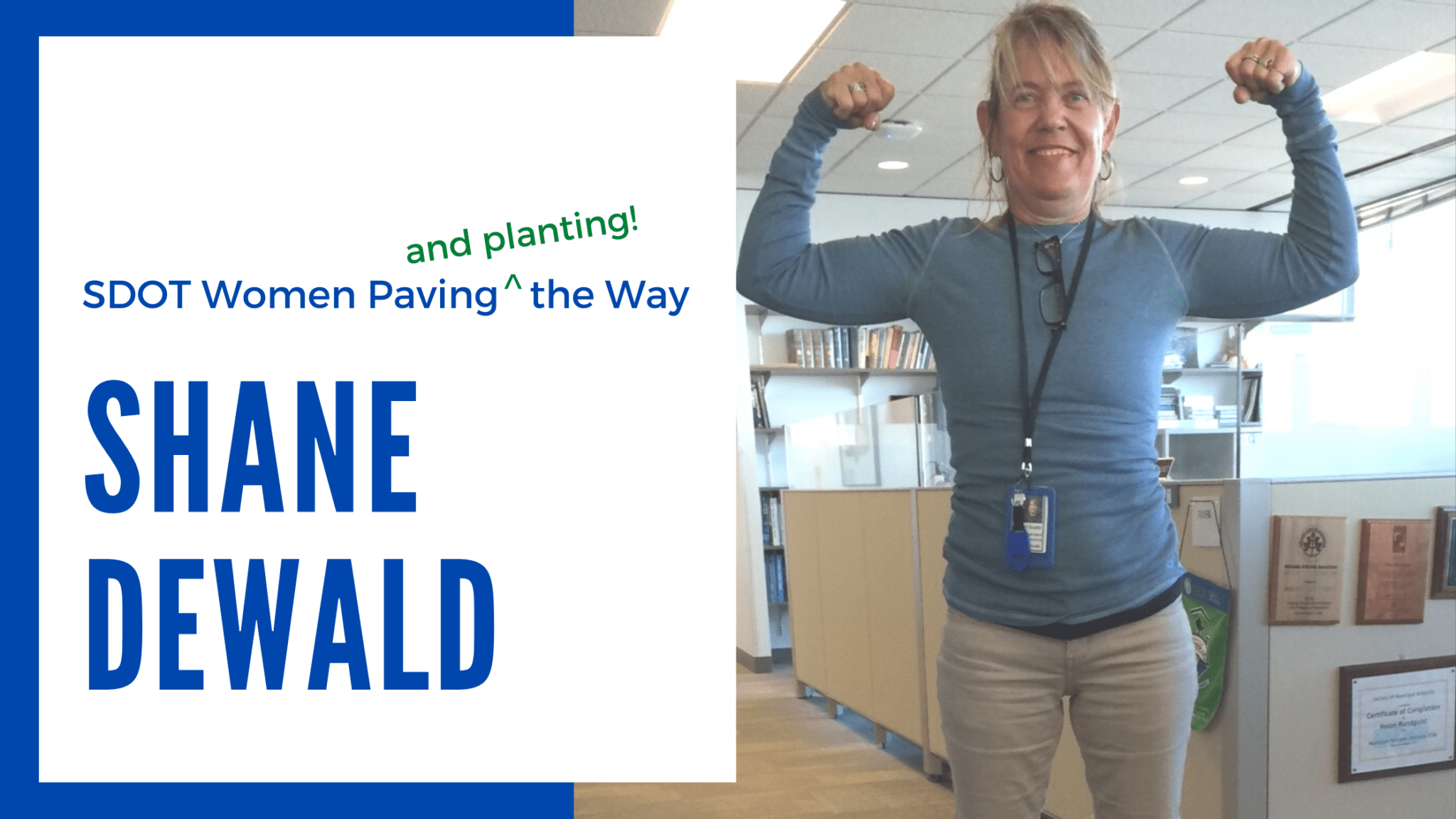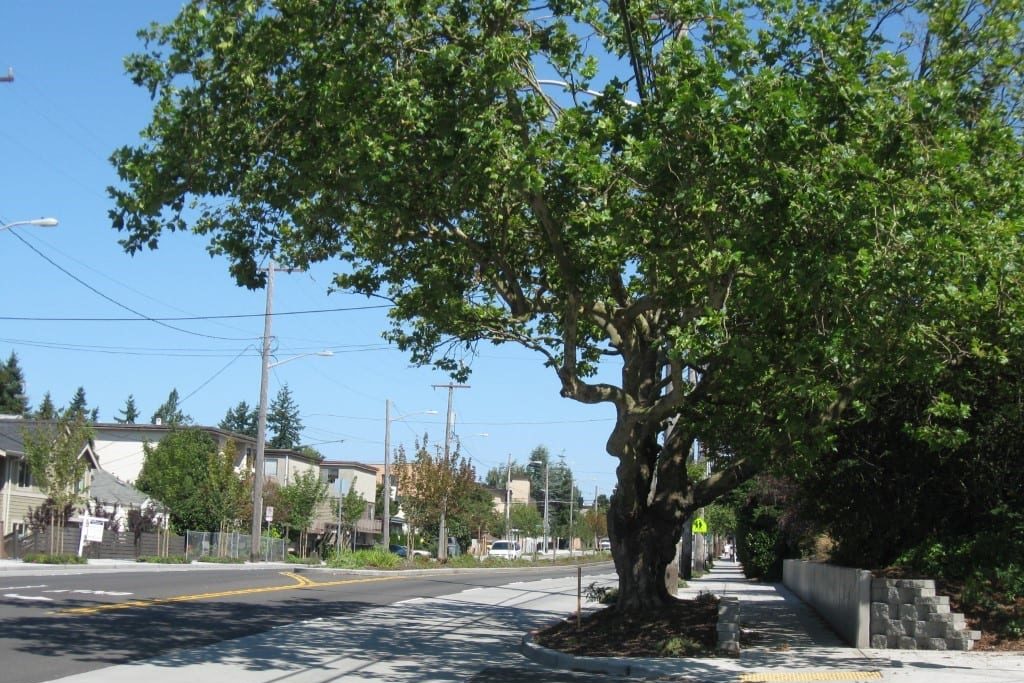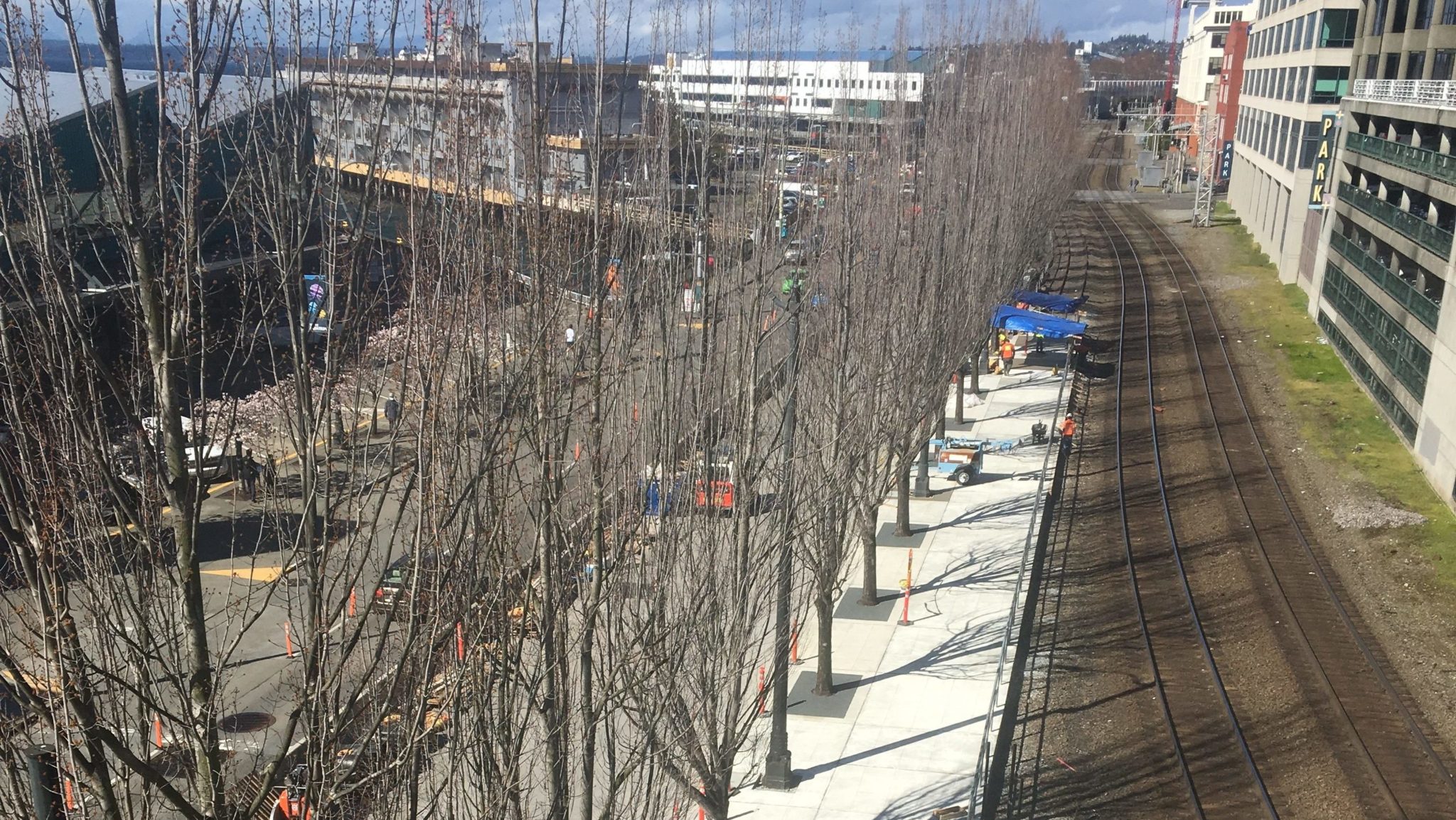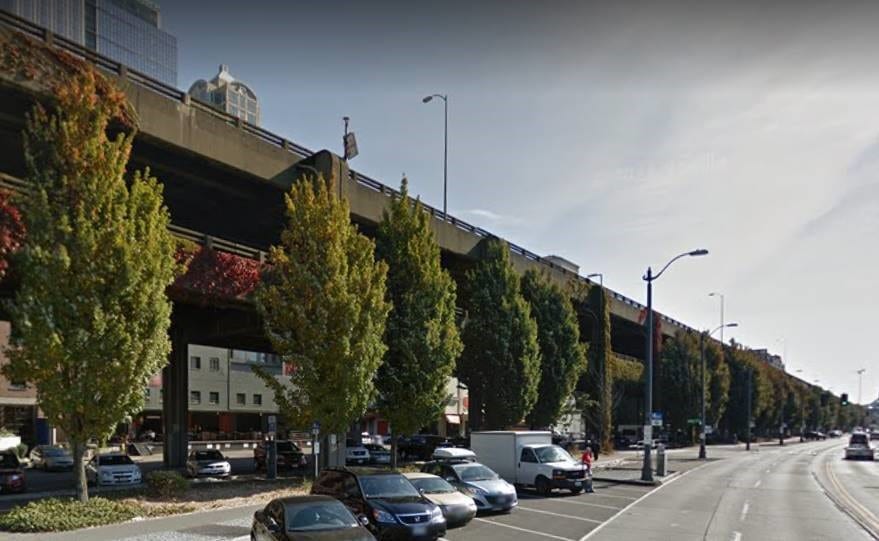
Foliage week continues! In celebration of the first week of Spring, we’ve dubbed this week Foliage Week and we’re highlighting the work of our Urban Forestry team.
It’s also Women’s History Month and we’re in the middle of our SDOT Women Paving (and Planting!) the Way blog series that shares stories of some of our talented, brave, strong, and determined employees who are making our city safer, opening paths for others, and fighting for a more sustainable and equitable city.
When Foliage Week & Women’s History Month overlap, it’s a must that Shane Dewald gets the spotlight.
Shane is our one and only Senior Landscape Architect in Urban Forestry and has been with the City for more than 30 years. In fact, she was instrumental in forming our current Urban Forestry team structure.
When we think about Seattle’s trees and lush landscape, we often think about Seattle’s iconic parks, but Seattle’s right-of-way is also filled with greenspace and street trees!
Right-of-way is a term used often at SDOT that includes all our streets, sidewalks, bike lanes, bridges, staircases, and the greenspace that connects them. The right-of-way is space that’s open to the public and there for daily exercise and walks, events with neighbors, and to get from one place to another.

Shane and her team work to meet a common goal – to make the most of every square foot in the right-of-way for optimum public benefit. This includes using street trees to improve air quality and reduce runoff from streets and sidewalks – a key function of trees as Green Stormwater Infrastructure.
Shane’s team includes Senior Foresters Ben Roberts and Cindy Kozak and Arboriculturist Adam Kilborn. Together, they make up the Landscape Architect’s Office of Urban Forestry. Their small but mighty team works on all of our capital projects and on every private or public development project that impacts the right-of-way and must retain or install trees as a Street Use permit requirement. They work to protect existing trees and to plant as many trees as the (often limited) right-of-way space allows.
The Landscape Architect’s Office is responsible for landscape design for many of our capital projects. They also review and approve conceptual and final plans developed by landscape architects on professional consultant design teams that work with SDOT on larger scale projects, like the Mercer Corridor.

Prior to her current role, for more than 20 years Shane was our Landscape Architect of Record. Her projects include the landscape architectural design for the Waterfront Trail (remember all of those trees along the old SR 99 Viaduct?). And, her design skill also helped transformed a huge gravel parking lot along Westlake Ave N to balance the green (trees) with the gray (pavement), not just once, but twice. The first time was to add green without the loss of parking and the second was for the Westlake cycle track.
We had the chance to chat with Shane and learn a little more about her career journey, a recent project that she worked on, and her accomplishments over the years.

Hi Shane, to start off, what do you love about your role as our Senior Landscape Architect?
One thing I love about my role is that I get to protect historically important mature trees in Seattle. These trees provide more than beauty. They improve our air and water quality, offer natural stormwater management and soil protection, and make community spaces more enjoyable. One tree I’m particularly proud for my work to preserve is the Sequoia tree in the Macy’s Triangle downtown. This tree is now ready for another effort like our first intervention to preserve it decades ago.
I’m uniquely lucky to be involved in a variety of projects that, together and over so many years, are truly transformative. I have the good fortune of strong support from Urban Forestry management, along with management in other departments, to pursue my enthusiastic interests in exploring and incorporating emerging technology and green oriented engineering practices. These tools have helped us successfully make the best use of the land, preserve the value of trees, and support soil conditions needed for new trees after a mature tree in decline must be removed.
Can you tell me about a project that you’ve recently worked on that you’re proud of?
I’m proud of our work to incorporate so many trees and new “soil cell” technology in a project along NE 43rd Street that will improve access for people walking, rolling, biking, and taking transit near the new U-District Link Light Rail station. (Read all about how these underground soil cells provide optimal conditions for street trees in a blog from last December.) After many years of planning, it’s currently in construction and nearing the stage that includes the soil, irrigation, tree, and plant installation.
This has been a very collaborative project from the beginning. I’m amazed by Project Manager Janet Loriz’s juggling skills to balance so many stakeholder groups, outside agencies, and so many moving parts that must work together – within just two blocks – to meet all of the project objectives. Janet, the project engineer, and the construction management team made it the best experience, supporting my effort to include the installation of soil cells and pilot installation of a new technology called permavoid that provides increased water storage. This project also provided learning opportunities for UW students and faculty specialized in stormwater engineering from the Landscape Architecture Program.
How do you think identifying as a woman has impacted your career?
With the name Shane, people don’t always realize I’m a woman until they meet me. Earlier in my career, I was often the only woman in the room for large-scale development projects. I’ve greatly appreciated the increase in women on project teams, including women at the head of the table running the show, as well as women in civil engineering, architecture, landscape architecture and project management.
I was actually hired by a female Landscape Architect for WSDOT as my first position in the State of Washington back in 1986. She encouraged flexibility empowered me to balance work and my two children in preschool – a critically important factor as I returned to fulltime work outside the home. I am grateful to have had her as a supervisor.

What is some career advice that you’ve received?
The best advice I received is don’t get too attached to projects. We do things in the right-of-way, and it’s always subject to change. This was hard to hear at first, because I’m passionate about my projects, but the person who told me this, was right. Things change.
The landscape architectural design is here for a purpose, it serves that purpose, and then eventually it will evolve or even be demolished and reconstructed.
The Waterfront Project is a perfect example: In the 1990s I designed the landscape near the SR 99 Viaduct along the Waterfront Trail. It included a striking row of columnar trees underlain with daylilies. Today, that area is being redeveloped for all modes of transportation, functioning to serve all who live, work, or visit Seattle. This is at the extreme end in terms of evolution, but it is good and is a reflection of the evolution of my career that has enabled me to learn and grow with each challenge and evolve in my sense of worth.
What career advice do you like to share with others?
My advice for Landscape Architect students: “Don’t wait. Get your license. It is the reward for the hard work and money spent.”
I sat on the Washington State Board of Registration for two terms and recognized the need to change licensing requirements to allow graduates to sit for the license exam while they work to gain two to three years of experience necessary for licensure. This change reduced the fear factor that had been a roadblock for many graduates with no appetite for taking more tests three years later.
Enjoy other Foliage Week blogs about a new tool to help you select what tree to plant and about a project in South Park where we installed about 40 trees last weekend.
Also, enjoy other SDOT Women Paving the Way blogs and learn about the work Nina, Mildred, Kristen, and Karen are doing.

